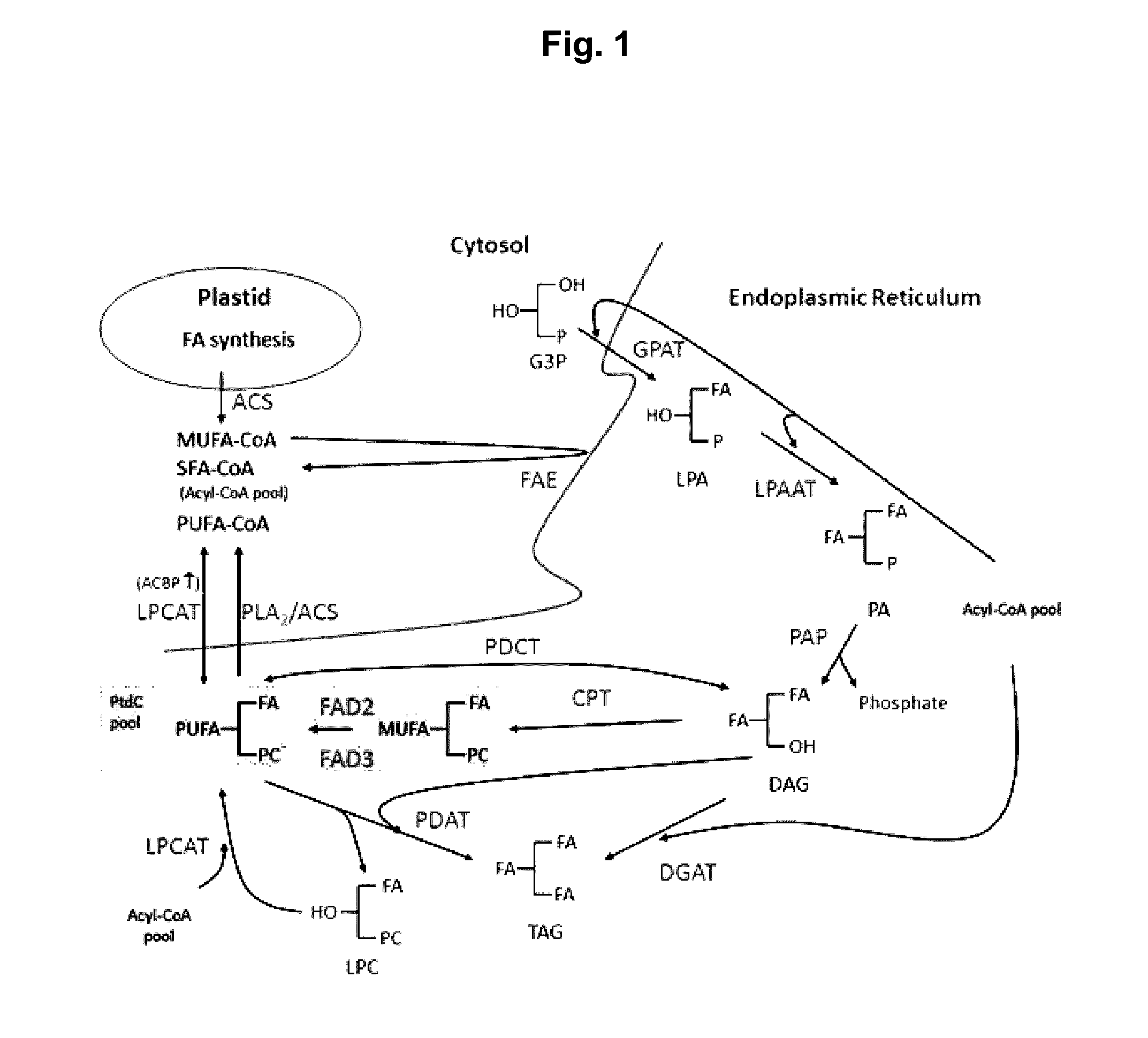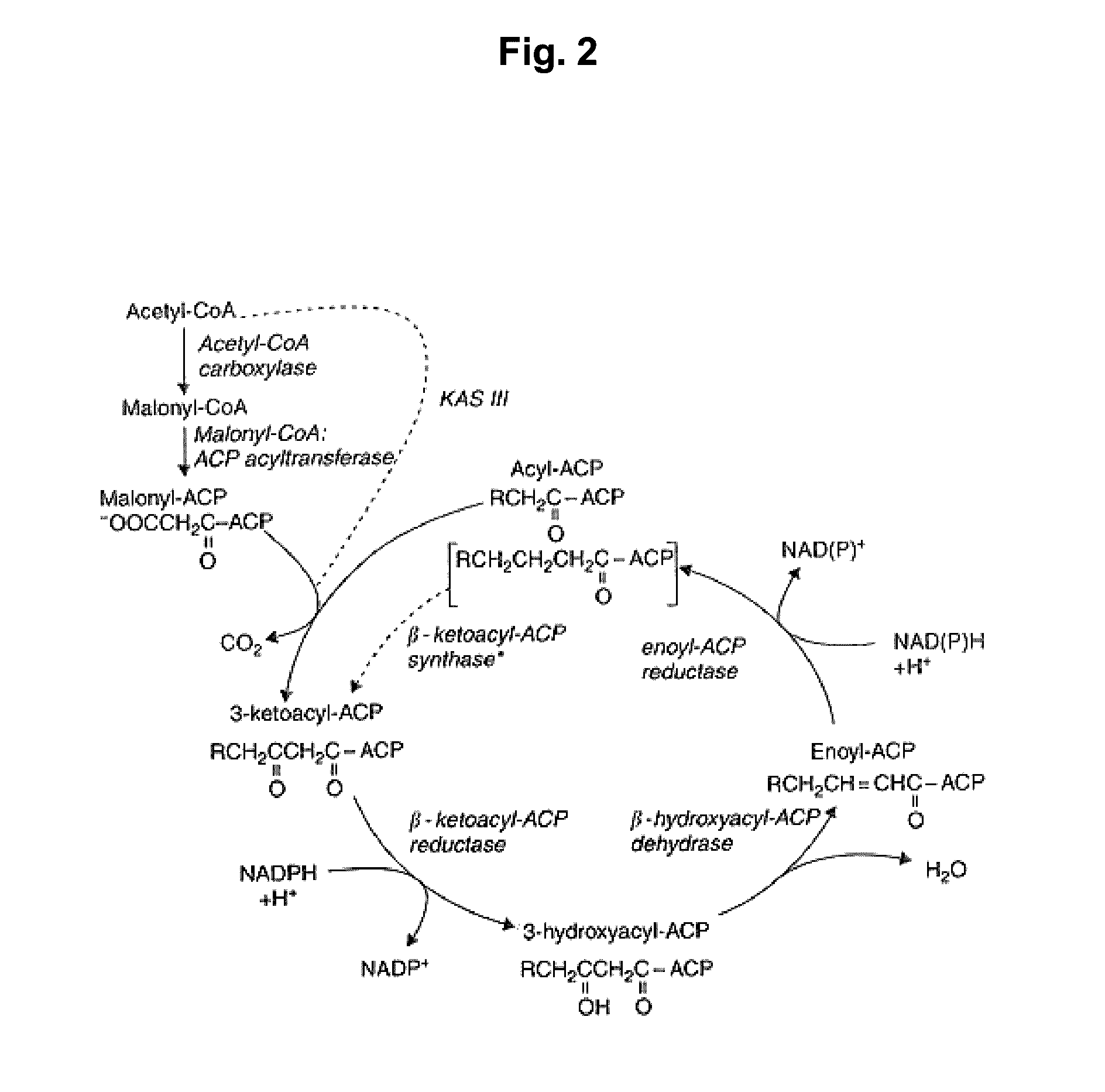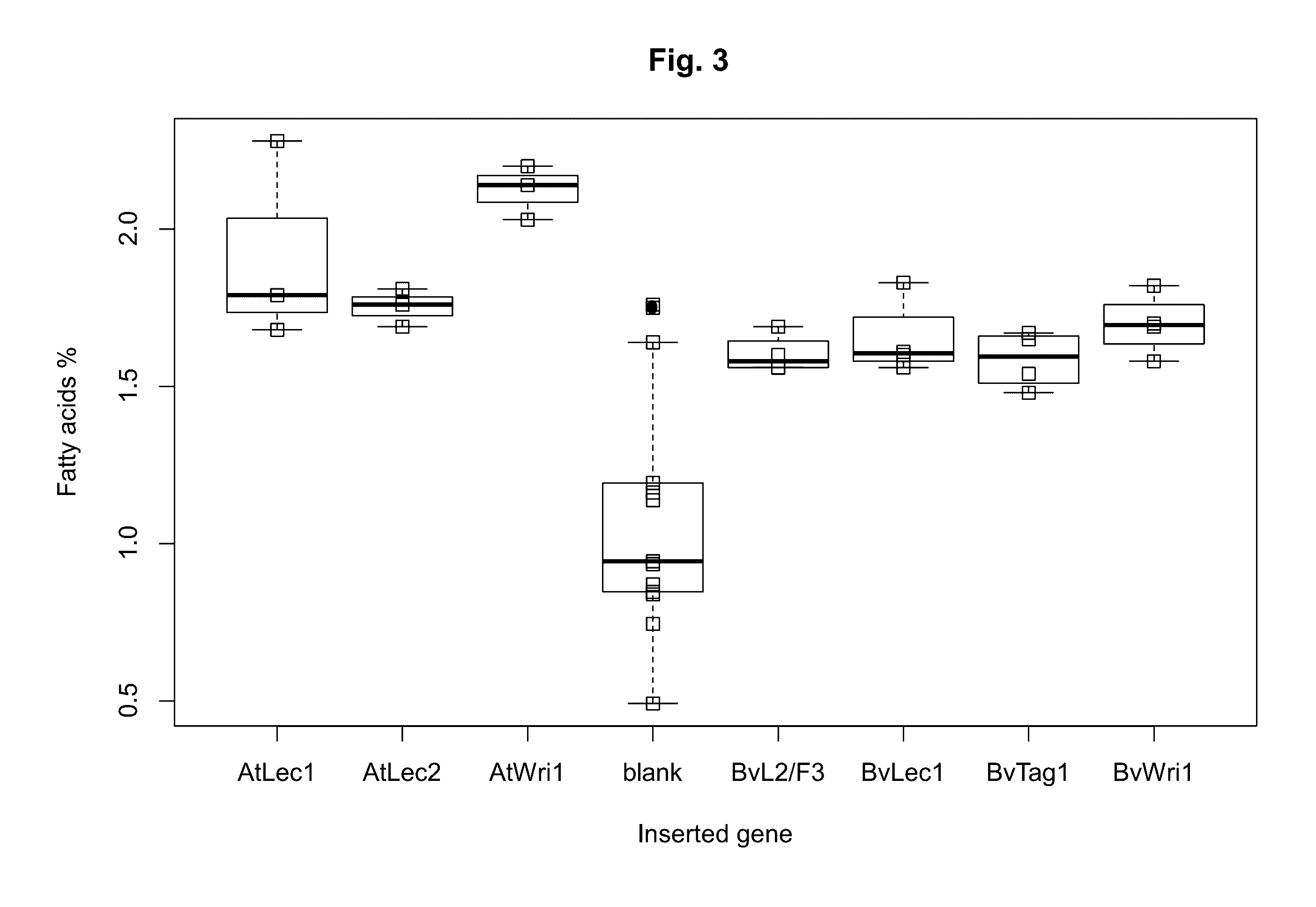Genetically altered plants producing fatty acids
a technology of genetically modified plants and fatty acids, applied in the field of increasing the production of fatty acids, can solve the problems of crop insufficient fuel production, growth of worldwide energy consumption, and depletion of fossil fuel, and achieve the effect of increasing the resistance of a genetically altered plan
- Summary
- Abstract
- Description
- Claims
- Application Information
AI Technical Summary
Benefits of technology
Problems solved by technology
Method used
Image
Examples
example 1
Promoters for Expression Vectors / Cassettes
[0076]In one embodiment of this invention, a known Beta vulgaris storage tissue specific promoter, the major latex-like protein promoter, Genbank accession AX449164, SEQ ID NO: 1 (Oltmanns, et al., Planta 224:3, 485-495 (2006)) is used in the expression vectors or cassettes of this invention. The B. vulgaris major latex-like protein has sequence similarity to the major latex proteins from the opium poppy, but has unknown function. This B. vulgaris promoter drives expression of genes encoding proteins within the storage tissue, albeit weakly. The sugar beet major latex-like protein promoter is active in storage tissue of at least one root crop.
[0077]In another embodiment of this invention, the expression vectors or cassettes of this invention can use one of the Beta vulgaris promoters discovered by the U.S.D.A. and which are described in U.S. Patent Application Publication 2014 / 0150138. The promoters were obtained from different strains of B....
example 2
Sugar Beet Specific Polynucleotides and Expression Vectors / Cassettes
[0079]The present invention also involves polynucleotides, obtained from sugar beets, encoding transcription regulators (Lec1, Lec2 / Fusca3, and Wri1) and one enzyme (Tag1) involved in triacylglycerol synthesis, the proteins encoded by these polynucleotides, and expression vectors or cassettes containing one or more of the polynucleotides linked to one or more of the heterologous promoters discussed supra. The polynucleotides encoding the enzyme and transcription regulators are the sugar beet derived sequence for (1) Lec1 (Leafy Cotyledon1, SEQ ID NO: 2; amino acid sequence in SEQ ID NO: 6); (2) Lec2 / Fusca3 (Leafy Cotyledon2 / Fusca3, SEQ ID NO: 3; amino acid sequence in SEQ ID NO: 7); (3) Wri1 (Wrinkled1; SEQ ID NO: 4; amino acid sequence in SEQ ID NO: 8); and (4) Tag1 (diacylglycerol O-acyltransferase 1 (also referred to as “Dgat”), SEQ ID NO: 5; amino acid sequence in SEQ ID NO: 9).
[0080]In addition, the present inv...
example 3
Expression Vectors Generation
[0086]The nucleotide sequences for BvLec1, BvLec2 / Fusca3, BvWri1, BvTag1, AtLec1, AtLec2, and AtWri1 are synthesized using DNA synthesis at Genewiz, Inc. (South Plainfield, N.J.), incorporating a BglII restriction enzyme sequence 5′ of the ATG start codon and a 3′ BstEII sequence after the stop codon sequence in each gene, except with BvLEC1, where a 3′ AfIII restriction enzyme site was synthesized after the stop codon. Each newly synthesized gene is individually incorporated into the pCambia 1301 plant expression vector under control of CaMV 35S (35S) promoter, a constitutive promoter, to generate pCAMBIABvLec1, pCAMBIABvLec2 / Fusca3, pCAMBIABvWri1, pCAMBIABvTag1, pCAMBIAAtLec1, pCAMBIAAtLec2, and pCAMBIAAtWri1, respectively (Genewiz, Inc., South Plainfield, N.J.). pCAMBIA1301 carries the hpt marker gene for selection of hygromycin resistant transformed plant cells.
PUM
| Property | Measurement | Unit |
|---|---|---|
| concentrations | aaaaa | aaaaa |
| concentrations | aaaaa | aaaaa |
| concentration | aaaaa | aaaaa |
Abstract
Description
Claims
Application Information
 Login to View More
Login to View More - R&D
- Intellectual Property
- Life Sciences
- Materials
- Tech Scout
- Unparalleled Data Quality
- Higher Quality Content
- 60% Fewer Hallucinations
Browse by: Latest US Patents, China's latest patents, Technical Efficacy Thesaurus, Application Domain, Technology Topic, Popular Technical Reports.
© 2025 PatSnap. All rights reserved.Legal|Privacy policy|Modern Slavery Act Transparency Statement|Sitemap|About US| Contact US: help@patsnap.com



